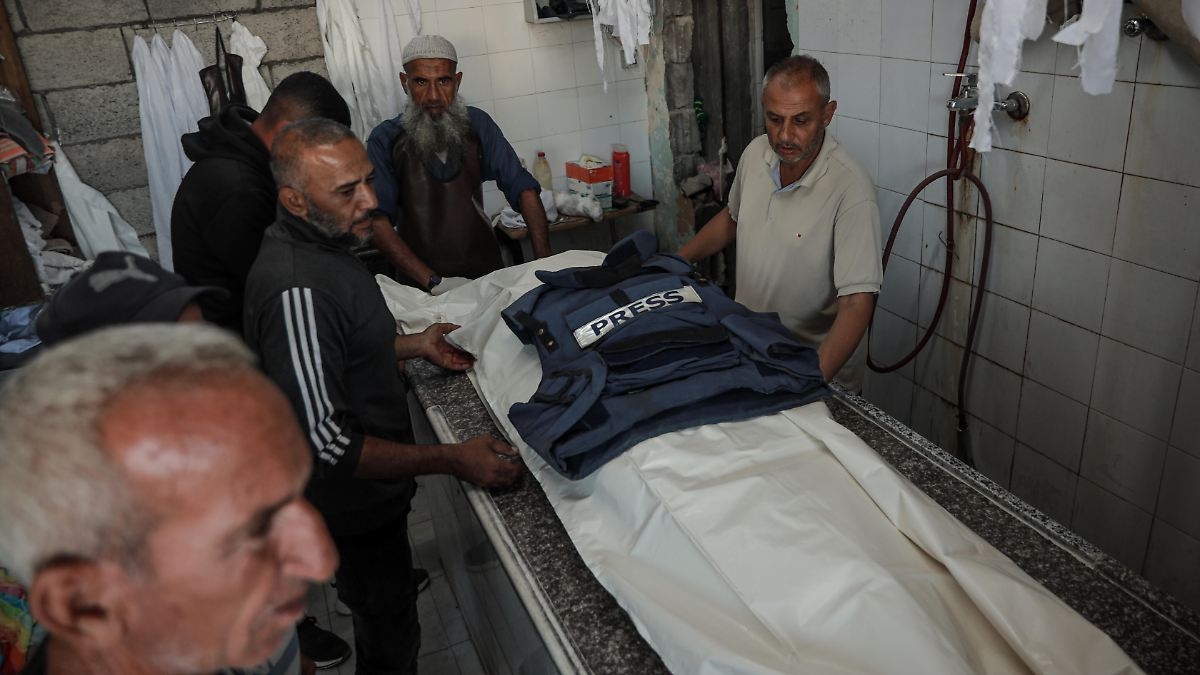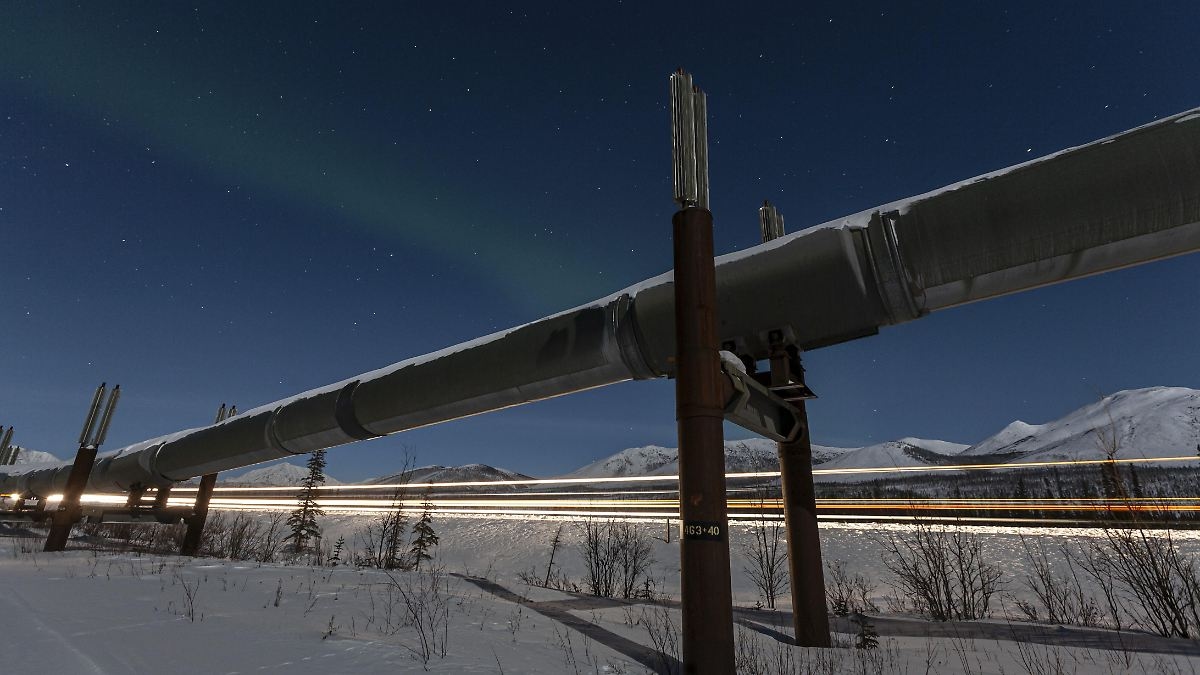Largest naval battle of all time: At Leyte, Japan sacrificed its aircraft carrier fleet

A massive explosion rocks the US escort carrier "St. Lo" shortly after the kamikaze attack on October 25, 1944.
(Photo: Corbis via Getty Images)
In the fall of 1944, US troops set out to liberate the Philippines. To prevent this, Japan sent its navy into action. For the Emperor's armada, the largest naval battle in history in Leyte Gulf became a suicide mission.
On the morning of October 25, 1944, there was a brief moment of relief on the "St. Lo." After an hours-long battle with Japanese warships in Leyte Gulf, the danger to the US escort carrier and its task force appeared to have been averted.
But suddenly, Japanese planes appear in the sky. Instead of dropping bombs, they descend directly toward the American ships. Moments later, one of the planes pierces the flight deck of the "St. Lo" and explodes. Within half an hour, the carrier sinks, taking more than 150 crew members with it. The attack marks the first organized kamikaze attack of World War II and the gruesome conclusion of the largest naval battle of all time.
"The Battle of Leyte Gulf ended in a heavy defeat for Japan and the loss of its aircraft carrier fleet," says Japanese historian Takuma Melber in an interview with ntv.de. He calls it a "preliminary decision in the Pacific War." "After the battle, the path to the Japanese islands was open for the Allies," says the research associate at Heidelberg University.
Landing in the PhilippinesIn the fall of 1944, US forces launched a broad-front offensive against Japanese positions in the Western Pacific. On October 20, they established beachheads on the islands of Samar and Leyte. In a massive landing operation, 132,000 troops and 200,000 tons of equipment were landed to expel the approximately 225,000 Japanese soldiers from the Philippines.
"A recapture of the archipelago by US troops would have meant the loss of lines of communication with the Japanese-occupied Dutch East Indies, present-day Indonesia," says Melber. "Japan sourced important raw materials and forced labor from there." Tokyo is aware of the danger. The Imperial General Staff plans to cut off the enemy's supplies and throw the landed units back into the sea. To achieve this, the US 3rd and 7th Fleets, which were securing the invasion, must be eliminated.
In the Leyte Gulf area, Japan deployed 63 warships, including the two largest battleships in the world: the Yamato and the Musashi. In addition, there were 450 aircraft. On the other side, the United States deployed over 220 ships, including 35 aircraft carriers. 1,200 combat aircraft ensured air supremacy.
Aircraft carrier as baitDespite overwhelming superiority, Tokyo opted for an offensive and divided its armada into three groups: The northern group, with its carrier fleet, had barely any aircraft or pilots left. Under the command of Vice Admiral Jisaburo Ozawa, it was to be sacrificed as bait to lure the US 3rd and 7th Fleets away from the main battle area. The southern group, under Admiral Shoji Nishimura, and the central group, under Vice Admiral Takeo Kurita, were to then use a pincer movement to destroy the landing forces in Leyte Bay.
But already en route to the battlefield, American submarines attacked the Japanese central group in the Palawan Passage on October 23. A day later, US aircraft opened fire on the ships. The "Musashi" was hit by more than 30 torpedoes and bombs. Shortly thereafter, the 263-meter-long colossus sank with a crew of 1,000.
The Southern Group suffered a similar fate. When Nishimura's force attempted to penetrate the Surigao Strait into Leyte Gulf, a classic battleship duel ensued. Nishimura died when his flagship sank after sustaining multiple hits. In the end, his units retreated in defeat.
Kurita changes courseAfter Nishimura's group is eliminated, US reconnaissance aircraft spot the Japanese carrier group under Vice Admiral Ozawa north of Luzon. The commander of the US Third Fleet, Admiral William Halsey, takes the bait. Since Kurita's ships temporarily turn away, he sends his units north to eliminate Ozawa's carrier.
"Within a few hours, Halsey succeeded in eliminating all four Japanese aircraft carriers," says Melber. "But he soon realized that the real drama was unfolding 600 kilometers further south."
While Halsey's bombers and naval artillery decimate Ozawa's formation, Kurita unexpectedly turns around, crosses the San Bernardino Strait unhindered, and approaches the barely protected landing forces.
On the morning of October 25, several American escort carriers and destroyers confront Kurita. A fierce battle ensues off the island of Samar. However, the Japanese vice admiral lacks a clear overview of the situation and appears indecisive. Shortly after 9:00 a.m., the Americans are relieved to see that Kurita's ships are withdrawing.
But just moments later, Japanese fighter planes launched a suicidal attack on the US ships. They were dubbed "kamikaze" ("divine wind") in memory of the typhoons that destroyed two Mongolian invasion fleets in the 13th century. As a result of the attack, the "St. Lo" sank, and three other carriers were damaged.
"Japan's best pilots had already fallen""Earlier in the war, there had been isolated suicide attacks," says Melber. "In the Battle of Leyte, this tactic was systematically used for the first time." The Japanese military leadership hoped to deter the Americans and force a ceasefire. "There were also pragmatic considerations behind this," explains the military expert. "Japan's best pilots had already been killed, the junior pilots were poorly trained and had little experience in conventional air combat."
But even the kamikaze attacks could not prevent Japan's decisive defeat in Leyte Gulf. The Imperial Navy deployed almost all of its available ships and lost about half. The losses included four aircraft carriers, three battleships, ten cruisers, twelve destroyers, and 300 aircraft. Around 12,000 Japanese soldiers were killed. The Americans lost three carriers, three destroyers, one submarine, more than 200 aircraft, and 3,000 men.
"Despite the clear defeat, Tokyo continued the war," says Melber. "Just as radically as Nazi Germany, Japan followed the motto 'victory or defeat' in the final months of the war." In April 1945, the Imperial Navy suffered its final blow with the sinking of the "Yamato." But it wasn't until the atomic bombings of Hiroshima and Nagasaki that Japan surrendered unconditionally five months later.
Source: ntv.de
n-tv.de





